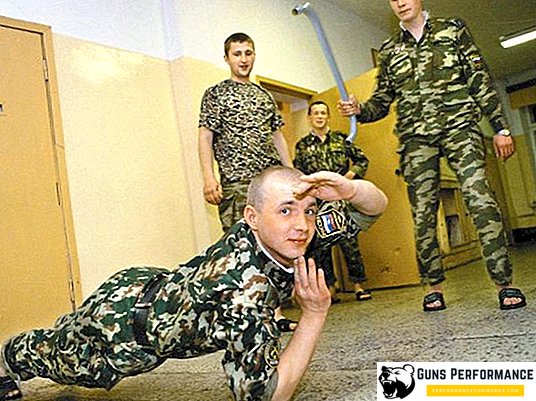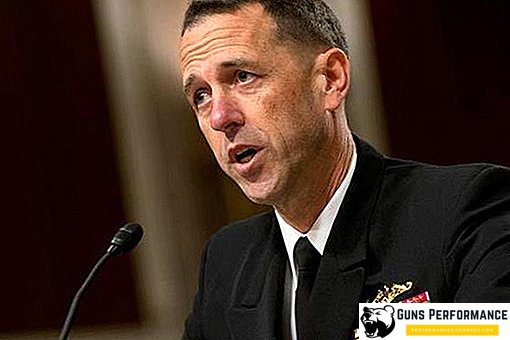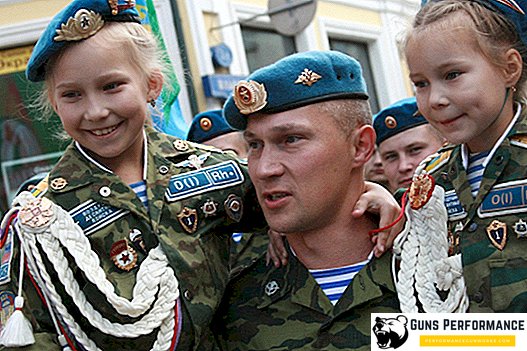The Holocaust is a carefully organized operation to persecute and exterminate Jews in Europe. In the period from 1933 to 1945, persecution was also carried out on Roma, Poles, homosexuals, the incurably sick, and prisoners of war. From the Greek language "Holocaust" is translated as "burnt offering". How many people died during the Holocaust? According to different sources:
- 4 to 6 million Jews;
- about 2 million gypsies;
- 3 million Soviet prisoners of war;
- about 300 thousand Poles (not counting military losses);
The Holocaust is often referred to as the so-called Operation Tiergartenstraße 4, the purpose of which was to completely destroy mentally ill and hereditarily sick people, as well as homosexuals. Operation T4 was first carried out by forced sterilization, and after the 1940s, all those accused of racial inferiority were massively executed already in the death camps.
The difference between the Holocaust and genocide
The main difference between the Holocaust and any other genocide lies in the fact that, according to program documents, an entire nation was subject to destruction. The project worked politicians, doctors and engineers. While the genocide was carried out in the course of any conquests, the Holocaust as an idea originated against the background of A. Hitler's political ideology about shifting the blame for European problems on Jews and the theory of racial superiority of the Aryans.

History knows many examples of genocide of certain ethnic groups, for example:
- the genocide of Armenians, Assyrians and Pontic Greeks in the Ottoman Empire of 1915-1923;
- the destruction of Serbs in Croatia during the Second World War;
- Cambodian assassinations of Khmer Rouge in 1975-1979.
Some occurred quite recently:
- the 1994 Rwanda massacre between the Hutu and Tutsi tribes;
- the genocide of Kurds in northern Iraq in 1987-1989. About 180 thousand people were killed;
- ethnic cleansing in Srebrenica in 1995, when the Serbian army destroyed more than 8 thousand Bosnian Muslims.
Characteristic features of the Holocaust are forethought and bureaucratic design. In the service of A. Hitler there were entire death camps, where the destruction of the people was conducted in a thorough and thorough way. Scientists and physicians of the Third Reich put forward "scientific" theories about racial superiority, propagandized eugenics in order to confirm their actions. Therefore, the Holocaust was documented and did not hide in any way, unlike other genocides.
Anti-Semitism in Nazi Germany and the causes of the Holocaust
The ideology of Hitler when he came to power was proclaimed the superiority of the German nation over others, including anti-Semitism. The upheavals that hit Germany after the defeat in the First World War were intensified by the economic crisis. All this contributed to the development of the extreme nationalism among the Germans. Hitler skillfully played in this situation, declaring that Jews were to blame for all the troubles, developing his racial theory, which later managed to find many supporters.
In April 1933, one of the first anti-Jewish pogroms occurred, during which attacks on shops, law firms, and hospitals owned by Jews were committed. A month later, on the initiative of the Minister of Propaganda Goebbels, the burning of “harmful books” took place, whose list included many works by authors of Jewish origin (Zweig, Freud, Heine). This marked the beginning of the Holocaust. Two years later, at the next congress, the transition to the initial stage of the “final solution of the Jewish question” was carried out - at the legislative level, civil rights were withdrawn from the “racially inferior”.

The policy of anti-Semitism was carried out consistently. At first, Jewish children were forbidden to attend schools. Then racial hygiene lessons appeared in the timetable. Over time, the Jews began to oust the public and economic life of Germany.
In November 1938 there was a pogrom, which went down in history as the Crystal Night. The reason for this was the murder of a member of the German Embassy in France. That night, over 100 Jews were killed, several thousand shops were smashed and looted. The pogrom marked the second stage - the beginning of the deportation of more than 30 thousand Jews to concentration camps.
After the annexation of Poland in 1940, tens of thousands of Jews were taken to the ghetto, where they were forced to engage in slave and sometimes unpaid labor and wait for departure to concentration camps. Following the German attack on the USSR, six death camps appeared on Polish territory - Auschwitz (Auschwitz), Treblinka, Majdanek, Chelmno, Belzhets and Sobibor. Special gas chambers with “cyclone-B” and furnaces were used to kill people and burn corpses in truly industrial volumes. Auschwitz is the most dead - over a million people, more than 800 thousand of them were Jews.
In the occupied territories of the USSR, special Reich Commissariats were created, engaged in the registration of Jews. Subsequently, they were liquidated by special aiznatzgroup. Massacres and pogroms were committed with the help of collaborators. Jews were taken outside the cities and shot. Those who could bring some more benefit were usually kept in the ghetto. After 1942, Nazi Germany began the gradual extermination of their inhabitants. By the autumn of 1943, residents of the last Lithuanian and Belarusian ghettos were transferred to concentration camps.
Nuremberg process and the “closet of shame”
In 1943, the Declaration on the Crimes of the Nazis was signed, which warned that there would be a punishment for all the atrocities of the criminals. In 1945-1946, in Nuremberg (the city where the protocols of the Holocaust program were developed), a military tribunal sentenced 12 Nazi Germany leaders to death for crimes against peace and humanity. 30 thousand Nazis suffered severe punishment.
However, many managed to escape to the countries of South America, the USA and Canada. Despite this, 20 years later, some Nazi criminals, for example, A. Eichmann (head of the Gestapo), were captured and convicted. Similar processes occur to this day, since many criminals live on forged documents and are still hiding from the law. Part of the cases was closed due to the expired statute of limitations.

Justice was not always exercised in full force, often for political reasons. So, in Rome in 1994, a sealed cabinet was accidentally discovered, in which the cases of Nazi criminals were kept since 1960 and described about 2 thousand German war crimes. Germany at that time was striving to become a member of NATO, and the top leadership of Italy did not want to complicate this process, so the documents were safely hidden.
Reflection in the memory of mankind
The Holocaust became a tragedy not only for the Jewish nation, but also for the whole world, opening a new facet of madness, which the embittered leadership of the country can reach. Many memorials dedicated to the memory of the victims of this event are opening around the world. Among them:
- a monument on the banks of the Danube in Budapest, representing 60 pairs of shoes made of bronze. This refers to the events of 1944-1945, when the Nazis massively shot Jews here, and dumped their bodies into the water;
- six glass pipes in Boston, USA. Each of these means one of the six death camps, and the smoke passing through the pipes reminds of the smoke from the pipes of the crematorium;
- "Pit" in Minsk. This is one of the very first monuments of the Holocaust. One part of it is a pit lined with stones, and the other is a bronze group of people, as if flowing down, where death awaits them;
- Monument to the survivor in San Francisco, USA. It is created in the form of a concrete figure holding on to barbed wire. Behind him ten more figures are randomly dumped. The monument symbolizes the enormity of the Holocaust - for each survivor there were ten dead.
In each country affected by this genocide, there are several museums to commemorate the victims. The most famous of them are:
- Yad Vashem in Israel, the second most visited tourist attraction in the country;
- Memorial Synagogue on Poklonnaya Hill in Moscow;
- Auschwitz-Birkenau Museum in Poland. It consists of three concentration camps located in Auschwitz;
- Anne Frank's home in Amsterdam, where her diary was written and where she was hiding from the Nazis.
Holocaust Remembrance Day was approved by the UN in 2005 and celebrated on January 27th. The date marks the release of Auschwitz prisoners by Soviet troops in 1945. All the museums of the Holocaust on this day held mourning events.

The tragic phenomenon of the Holocaust has found considerable reflection in culture. To this day, books are being published and films about this event are being shot. In addition to popular science and research literature, there are many art books that are worth paying attention to those interested in the topic of the Holocaust:
- the novel “Life and Fate” of the Soviet military commander V. Grossman. The central theme of the book is the stories of various people against the background of the Second World War and German repression in particular;
- Irish writer D. Boyne’s book The Boy in the Striped Pajamas;
- poem "Babi Yar", written by E. Yevtushenko. On the basis of this poem, the famous 13th Symphony of Shostakovich was written;
- the novel “Heavy Sand” by A. Rybov.
Among the films should be noted the film by S. Spielberg “Schindler's List”, as well as the feature film by M. Herman “The Boy in Striped Pajamas”, shot from the book of the same name, and the picture by R. Polanski “The Pianist”.
The phenomenon of revisionism
In the world there are a large number of opponents of the Holocaust - revisionists. Basically, they disputed the theses that the killing of Jews was the deliberate policy of Nazi Germany, as well as information about the number of victims. According to Holocaust deniers, all the actions of the Jews after the war were aimed at extorting money from Germany to build their own state with the help of a global conspiracy theory.
The UN adopted a resolution in 2007 condemning revisionism. In some countries, Holocaust denial is illegal. However, this does not stop opponents, and they cite the following theses:
- the mass extinction of the Jews was due to their deportation, not destruction;
- there is no documentary evidence of the deliberate liquidation of the Jewish people;
- From an economic point of view, it was impossible to contain as many crematoria and gas chambers as Holocaust supporters say.
At present, the phenomenon of revisionism is widespread, first of all, in Arab and Muslim countries that do not recognize Israel as a state and wage war against it. Also, many European left radicals are Holocaust deniers. But most of all supporters of this idea among neo-Nazis and racists in Europe and the United States. Their views differ from radical anti-Semitism and non-recognition of the Holocaust completely to skepticism, regarding some data and facts.

The Holocaust is a unique phenomenon in its inhumanity. Even if we agree with some of the arguments of the revisionists and assume that its victims are too high, and the Holocaust itself is not a deliberate extermination of the Jewish people, but a prolonged genocide, it still remains the bloodiest act of human cruelty. The significance of the Holocaust in history cannot be underestimated, and the truth about it cannot be forgotten.












